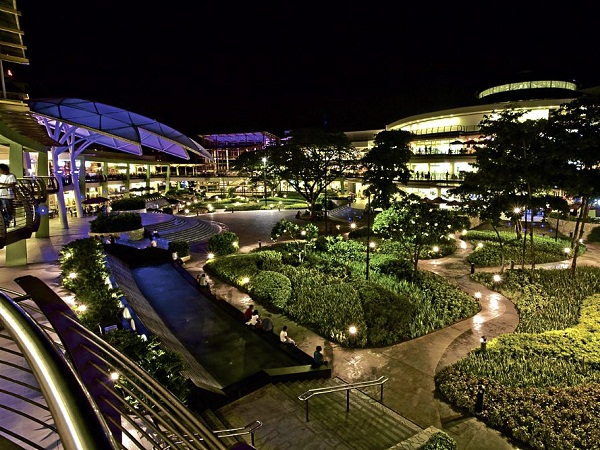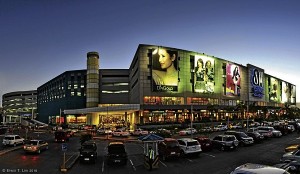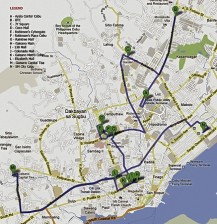Mall madness in Cebu
CEBU CITY—Malls have been sprouting like mushrooms here and in Cebu province.
SM opened its second mall in the province in Consolacion town in northern Cebu on June 1 while construction of SM Seaside City at the South Road Properties is ongoing.
J Mall opened in Mandaue City last November.
Ayala Center Cebu (ACC) is undergoing a P2-billion expansion, which will be completed in 2013.
The Gaisano group has joined the bandwagon with its simultaneous construction of at least four malls in the province.
34 malls on island
Is there enough market for these malls, especially that there are at least 34 existing malls spread here and the province?
Cebu City alone has 16 malls. These are Banilad Town Center, Robinson’s Place Cebu, Robinson’s Cybergate, JY Square Mall, Elizabeth Mall, SM City Cebu, Ayala Center Cebu, Raintree Mall, Coco Mall, Colonade Mall, Gaisano Main, Gaisano Capital-South (which was gutted by fire in December last year), Gaisano Capital Tisa, Gaisano Grand Talamban, Gaisano Country Mall and Gaisano Metro Colon.
6 in Mandaue
In Mandaue, there are six—Parkmall, Bridges Town Square, North Atrium, J Mall, Gaisano Pacific Mall and Gaisano Grand Mall.
The three malls in Lapu-Lapu City are Mactan Marina Mall, Gaisano Mactan Island Mall and the Gaisano Grand Mall.
Other malls are located in Talisay City (Gaisano Grand Fiesta Mall), Minglanilla town (Gaisano Grand Minglanilla), Consolacion (Fooda Mall), Carcar City (Gaisano Grand Carcar), Toledo City (Gaisano Grand Toledo and Metro Plaza Toledo), Balamban town (Gaisano Balamban), Bogo City (Gaisano) and Danao City (Gaisano Capital).
Still, a Cebuano economist predicted that in the next five years, more malls would be constructed on Cebu island, which stretches 225 km from north to south and had a total population of 4.17 million in 2010.
Spending power
The reason: Increase in spending power of those living and working in Cebu.
The growth has come from remittances of overseas Filipino workers, business process outsourcing companies and tourism, said Fernando Fajardo, an economics professor at University of San Carlos.
Fajardo, however, warned that the aggressive move of developers to open one mall after the other may lead to overinvestments that would result in cutthroat competition.
Slimmer profits
Competition is making profit margin slimmer. Losses maybe incurred during the first five years of operation, he said.
Competition has forced industry players to identify and focus on their market.
The Gaisano group, for example, puts up its malls in the towns to corner the market there and prevent it from going to Cebu City proper.
In the case of ACC, it targets the A, B and C markets—office workers and those living in gated residences and villages.
With this kind of market mix, ACC provides not just a mere shopping mall but a wide array of options on dining, shopping and relaxation.
Opened in 1994, the mall is inside the Cebu Business Park (CBP), a 50-hectare master-planned business subdivision developed by Cebu Holdings Inc., an Ayala Land Inc. affiliate.
“The mall is the centerpiece that stimulates the development of CBP,” said ACC general manager Joy Pollosos.
Condominiums, hotels and office buildings create a natural market for ACC, she said. Tourists and regional visitors are part of the second market.
BPO connection
CBP’s sister development, Cebu Information Technology Park (Cebu IT Park), in Barangay Lahug, provides another natural market for the mall.
Cebu IT Park houses BPO companies, such as Aegis People Support, eTelecare Global Solutions, NEC, Convergys Philippines and Microsoft.
“This population is mostly composed of the younger generation, the gadget and techie crowd who at a young age already has high disposable income,” said Pollosos.
New player J Mall does not rely on the local market to survive.
It plans to take advantage of Cebu’s position as transportation, education, financial and commercial hub in the Visayas and Mindanao.
This is the reason J Centre—where J Mall is located—has decided to create an integrated development that addresses the needs of the MICE (meetings, incentives, conferences and exhibitions) market and tourists.
J Centre will also house a hotel, a theater, a convention center, service apartments and BPO offices.
J Centre is the first foray of Everjust Realty Development Corp. into the real estate business. Its chief executive officer, Cebuano Justin Uy, first made waves exporting Cebu dried mangoes.
Inspired by Henry Sy
Uy said the decision to venture into real estate was inspired by SM tycoon Henry Sy whom he looks up to as a role model.
“SM is our idol. In 1972, they were just leasing [from] Ayala and yet they made a bold move in 1980 which led them to where they are now,” said Uy.
SM Prime Holdings Inc. is leasing a five-hectare property from Everjust for its SM City Consolacion.
The third SM mall will be called SM Seaside City at the South Road Properties and will resemble SM Mall of Asia in Pasay City.
Harry Pow, chief executive officer of H.S. Pow Construction and Development Corp. and J Centre business development manager, said the company hoped to brand J Mall as the “SM Megamall” of Mandaue.
“Megamall is a place to visit when someone from the province goes to Manila. We hope to have that Megamall image for J Mall. You’ve never been to Cebu or Mandaue if you have not visited J Mall,” he said.
Caveat
But a Cebuano entrepreneur said the unprecedented rise of malls in Cebu should be taken with a caveat.
“While generally it should be good for most businesses since the malls should allow more opportunities for businesses to expand, there also is the danger of spreading your business too thinly,” said Jay Aldeguer, chair of The Islands Group, which is into retail, design, media, adventure and hotel business.
Aldeguer said Cebu was following a pattern like most urbanized cities in the world where the natural inclination of developers and owners is to meet the rising demands of the community by opening more malls and supermarkets.
Study sustainability
Aldeguer said there should be a careful study on how many malls Cebu can sustain.
“Both developers and tenants should be more discerning in their expansion plans. You can definitely expect any business to capitalize on anything once an opportunity presents itself,” he added.
So why do developers even invest in malls?
Investors find it better to invest in developing a property whose value rises over time rather than depositing their money in the bank, said Carmel de Pio-Salvador, a board member of Mandaue Chamber of Commerce and Industry.
(Cris Evert B. Lato is a business correspondent of Inquirer Visayas.)























